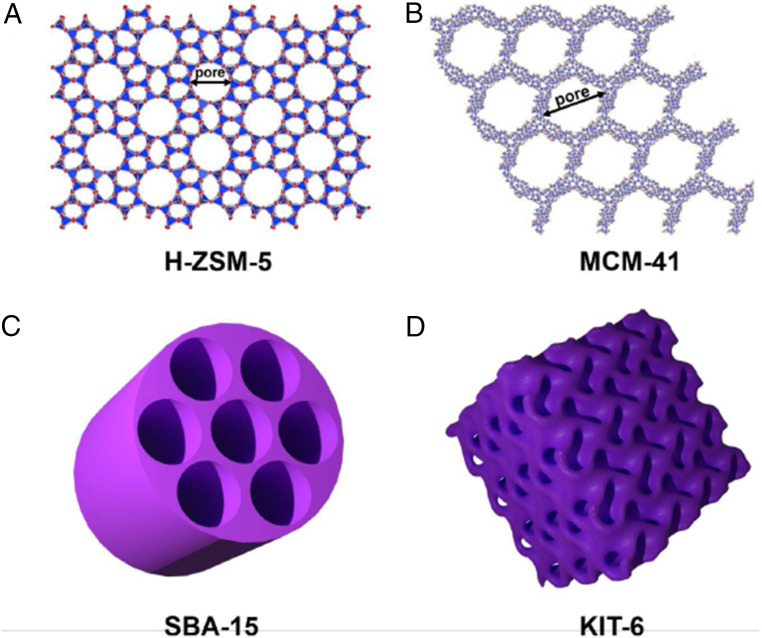Fig. 1.
(A) Crystal structure of H-ZSM-5 zeolite in which the linkages of tetrahedra define large cages (pores) with 0.55 nm diameter connected by tunnels. It can incorporate molecules no larger than these cages. (B) Crystal structure of MCM-41 mesoporous SiO2 with periodically spaced unidimensional parallel channels typically 2 to 10 nm in diameter. (C) Schematic of SBA-15 mesoporous silica with hexagonally arranged large pores 5 to 15 nm in diameter, surrounded by largely amorphous silica walls. (D) Schematic of cubic mesoporous KIT-6 silica (pore size larger than 5 nm) with gyroid minimal surface and Ia3d symmetry composed of two interpenetrating chiral channels which result in an interpenetrating network of cylindrical mesopores.

